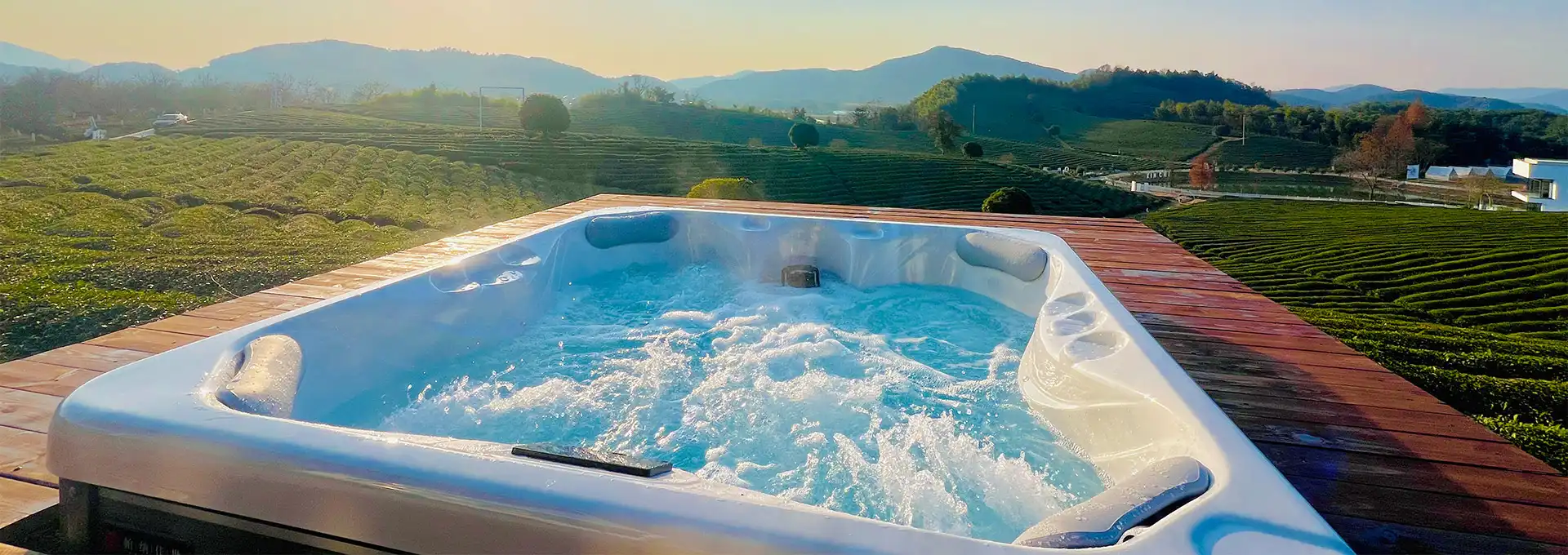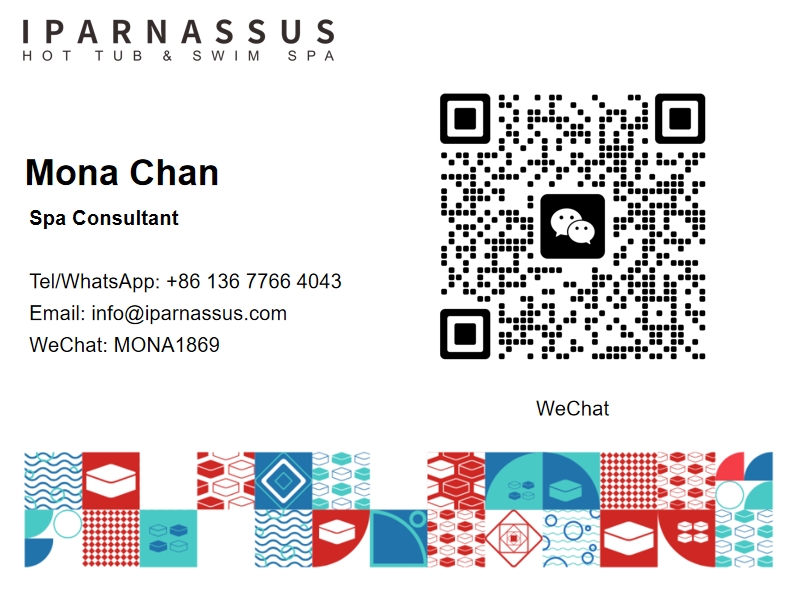How to Keep Your Hot Tub from Freezing?
2024-07-11 11:26:27
As winter approaches, hot tub owners face the challenge of protecting their outdoor oasis from freezing temperatures. Keeping your hot tub from freezing is crucial to prevent damage to the plumbing, equipment, and structure. This article will explore effective methods to maintain your hot tub during cold weather, ensuring you can enjoy warm, relaxing soaks even in the chilliest months.
What is the best temperature for a 4 person outdoor hot tub?
Finding the ideal temperature for your 4 person outdoor hot tub is essential for both comfort and energy efficiency. While personal preferences may vary, there are some general guidelines to consider when setting the temperature of your hot tub.
The recommended temperature range for most hot tubs is between 100°F and 104°F (37.8°C to 40°C). This range provides a comfortable and therapeutic experience for most users without risking overheating or discomfort. However, it's important to note that the U.S. Consumer Product Safety Commission advises against exceeding 104°F, as higher temperatures can pose health risks.
When determining the best temperature for your 4 person outdoor hot tub, consider the following factors:
1. Personal comfort: Start with a temperature around 102°F (38.9°C) and adjust up or down based on your preference and that of your fellow bathers.
2. Energy efficiency: Keeping your hot tub at a slightly lower temperature when not in use can help reduce energy consumption and operating costs.
3. Outdoor temperature: In colder months, you may prefer a slightly higher temperature to compensate for the chilly air.
4. Health considerations: If you have any medical conditions or are pregnant, consult with your doctor about safe hot tub temperatures.
5. Duration of use: For longer soaking sessions, a slightly lower temperature may be more comfortable and reduce the risk of dehydration.
To find the perfect temperature for your 4 person outdoor hot tub, experiment with different settings and gather feedback from your family or friends who use it. Remember that it's easier to increase the temperature if needed than to cool down an overheated tub.
It's also worth noting that modern hot tubs often come with programmable settings, allowing you to adjust the temperature based on your schedule. For example, you can set the tub to warm up just before you plan to use it, saving energy during periods of non-use.
Lastly, invest in a good-quality hot tub cover to help maintain the desired temperature and reduce heat loss when the tub is not in use. This will not only keep your hot tub at the optimal temperature but also contribute to energy efficiency and lower operating costs.
How often should you change the water in a 4 person hot tub?
Maintaining clean and hygienic water in your 4 person hot tub is crucial for both the health of the bathers and the longevity of the tub itself. The frequency of water changes depends on several factors, but there are some general guidelines to follow.
On average, you should change the water in a 4 person hot tub every 3 to 4 months. However, this timeframe can vary based on the following factors:
1. Frequency of use: If your hot tub sees heavy use, you may need to change the water more often, possibly every 2 to 3 months.
2. Number of users: More bathers introduce more contaminants, potentially requiring more frequent water changes.
3. Maintenance routine: Regular cleaning and proper chemical balance can extend the time between water changes.
4. Water quality: If you notice cloudy water, unusual odors, or difficulty maintaining proper chemical levels, it may be time for a water change regardless of the timeframe.
5. Total Dissolved Solids (TDS) levels: As TDS levels increase, it becomes harder to maintain water quality. Testing TDS levels can help determine when a water change is necessary.
To maximize the time between water changes and maintain optimal water quality, follow these best practices:
1. Test and balance water chemistry regularly, ideally 2-3 times per week.
2. Shock the water weekly or after heavy use to eliminate contaminants.
3. Clean or replace filters according to the manufacturer's recommendations.
4. Encourage users to shower before entering the hot tub to reduce the introduction of oils, lotions, and other contaminants.
5. Use a tennis ball or purpose-made sponge to absorb oils on the water surface.
6. Maintain proper sanitizer levels (chlorine or bromine) to kill bacteria and other microorganisms.
7. Run the jets for at least 15 minutes daily to circulate and filter the water.
8. Use enzymes or natural clarifiers to break down organic contaminants.
When it's time to change the water, follow these steps:
1. Turn off the power to the hot tub.
2. Drain the tub completely using a submersible pump or the tub's drain valve.
3. Clean the shell thoroughly with a non-abrasive cleaner designed for hot tubs.
4. Flush the plumbing lines with a line flush product to remove biofilm and debris.
5. Refill the tub with fresh water, adding a scale and stain inhibitor if you have hard water.
6. Balance the water chemistry before using the tub again.
By following a regular maintenance schedule and paying attention to water quality, you can ensure a clean and enjoyable experience in your 4 person hot tub while minimizing the frequency of full water changes.
What should you not do in a hot tub?
While 4 person outdoor hot tubs provide a relaxing and enjoyable experience, there are certain behaviors and practices that should be avoided to ensure safety, maintain hygiene, and protect the hot tub's equipment. Here's a comprehensive list of things you should not do in a hot tub:
1. Don't overstay your welcome: Limit your soaking time to 15-30 minutes, especially in hot water. Extended exposure can lead to dehydration, overheating, and potentially dangerous drops in blood pressure.
2. Avoid alcohol consumption: Drinking alcohol while in a hot tub can increase the risk of dehydration, impair judgment, and potentially lead to accidents or drowning.
3. Don't bring glass containers: Glass can easily break in and around the hot tub, posing a serious safety hazard. Use plastic or acrylic containers instead.
4. Don't enter with oils or lotions on your skin: These products can clog filters and create a film on the water surface, making it harder to maintain proper water chemistry.
5. Avoid using soap or shampoo: These products can cause foaming and upset the water balance, potentially damaging the hot tub's equipment.
6. Don't bring electronic devices: Water and electronics don't mix. Keep phones, tablets, and other electronic devices away from the hot tub to prevent damage and electrical hazards.
7. Avoid eating in the hot tub: Food particles can contaminate the water and potentially clog the filtration system.
8. Don't use the 4 person outdoor hot tub during electrical storms: Lightning poses a serious risk when you're in water, so always exit the hot tub when you hear thunder.
9. Avoid entering with dirty feet: Rinse your feet before getting in to prevent introducing dirt and debris into the water.
10. Don't adjust the jets or controls while underwater: This can potentially lead to electrical shock or equipment damage.
11. Avoid submerging your head: Keep your head above water to prevent ear infections and reduce the risk of inhaling water.
12. Don't use the hot tub if you have open wounds or infections: This can spread bacteria and potentially worsen your condition.
13. Avoid bringing pets into the hot tub: Pet hair can clog filters, and animals may introduce bacteria into the water.
14. Don't turn off the heat to save energy: Constantly reheating the water uses more energy than maintaining a consistent temperature.
15. Avoid using standard household cleaning products: These can damage the hot tub's surface and upset water chemistry. Use only products specifically designed for hot tubs.
16. Don't block the suction fittings: Keep hair, loose clothing, and jewelry away from these areas to prevent entrapment.
17. Avoid overcrowding: Stick to the recommended capacity for your hot tub to ensure proper water circulation and maintain safe oxygen levels.
18. Don't ignore strange noises or malfunctions: If you notice anything unusual, turn off the hot tub and consult a professional.
19. Avoid using the hot tub alone: For safety reasons, it's best to have someone else present or nearby when using the hot tub.
20. Don't forget to shower before entering: A quick rinse helps remove sweat, oils, and other contaminants that can affect water quality.
By following these guidelines, you can ensure a safe, hygienic, and enjoyable hot tub experience while also prolonging the life of your 4 person outdoor hot tub. Remember, proper use and maintenance are key to getting the most out of your hot tub investment.
For more information on hot tub installations and to find out more about our products, please feel free to contact us at info@iparnassus.com.
References:
1. U.S. Consumer Product Safety Commission. "Safety Barrier Guidelines for Residential Pools."
2. Centers for Disease Control and Prevention. "Healthy Swimming/Recreational Water."
3. Association of Pool & Spa Professionals. "Hot Tub Maintenance and Operation."
4. Energy.gov. "Energy-Efficient Home Design."
5. World Health Organization. "Guidelines for Safe Recreational Water Environments."
6. National Swimming Pool Foundation. "Pool & Hot Tub Alliance."
7. American Red Cross. "Water Safety."
8. Environmental Protection Agency. "Recreational Water Quality Criteria."
9. Hot Tub University. "Hot Tub Maintenance Guide."
10. Spa Depot. "Hot Tub Water Care and Maintenance."
Send Inquiry
Related Industry Knowledge
- What Causes Low pH in Hot Tubs?
- How to Build Your Own In-Ground Hot Tub?
- What Do You Need to Install a Swim Spa?
- What Length Swim Spa is Best?
- Will Ssd a Pay for a Swim Spa?
- How Often Should I Drain and Refill a 5 Person Hot Tub?
- How to move large hot tub?
- How to use a hot tub for therapy?
- Can I Add Foam to Hot Tub?
- How Does a Swimming Pool with a Spa Work?



